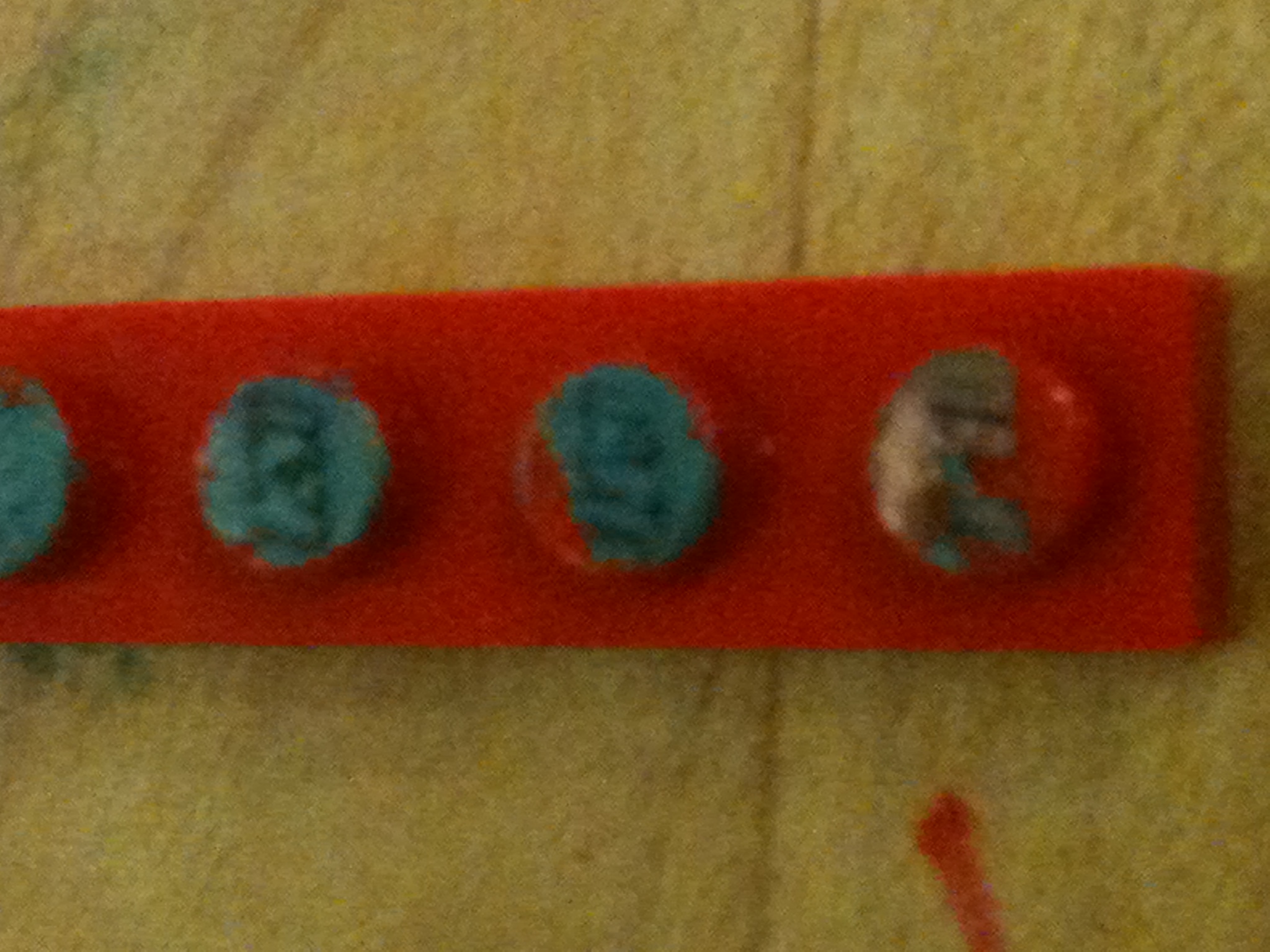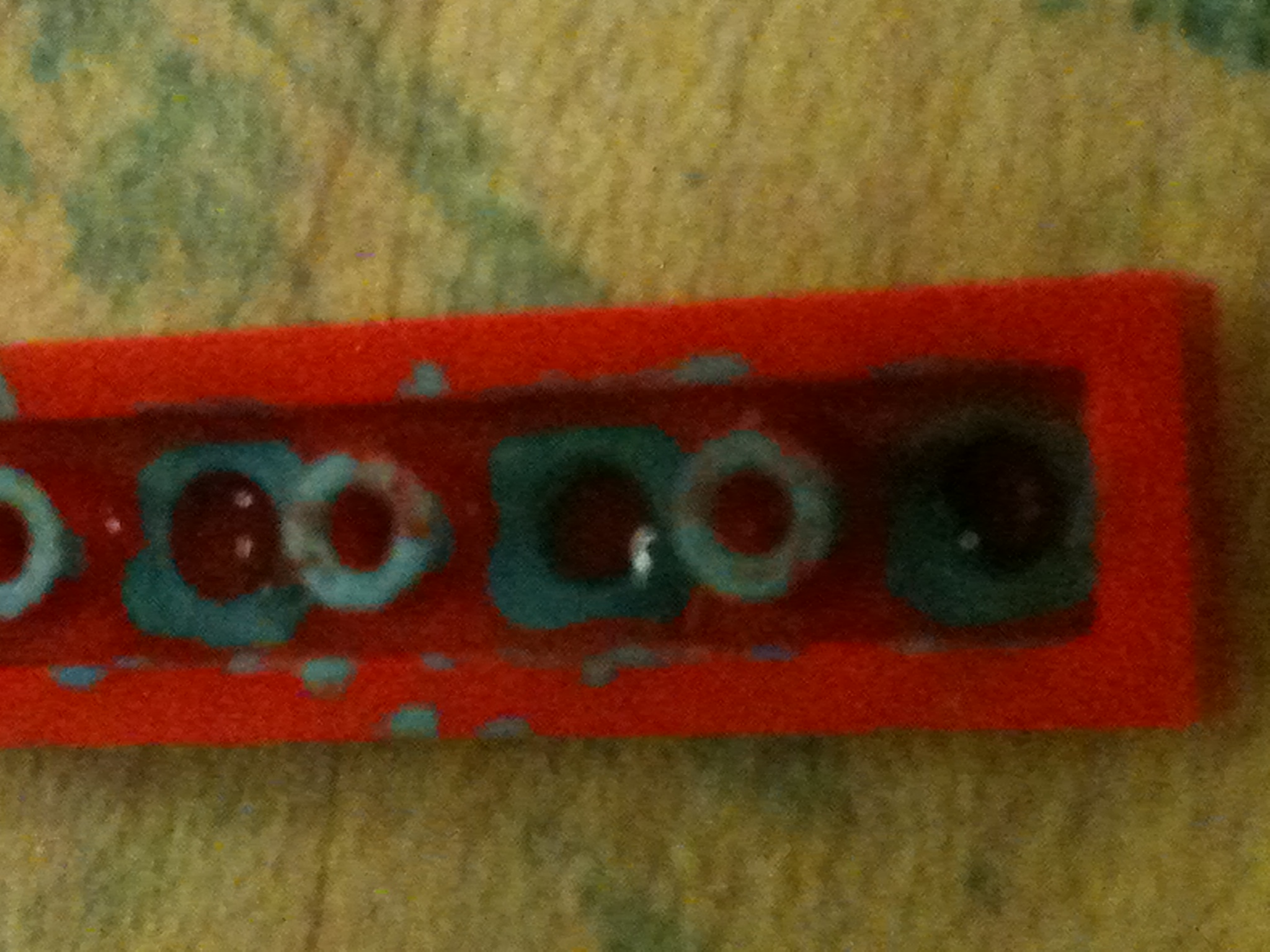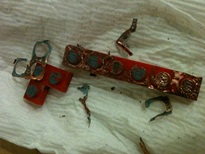Conductive LEGOs
by adedoyin
By: Adedoyin Ogunniyi
The Conductive LEGOs project was an attempt to create conductive LEGOs. Through this process, I got to explore the method of electroplating materials. Electroplating is the act of coating ordinary non-conductive materials in a metal (such as copper). This allows anything to be used to build a circuit. The way electroplating works is that the object you want to coat is first painted in conductive ink. Then, the painted object is put into a corrosive bath and connected to a power supply. In this corrosive bath is also a copper rod connected to the power supply. As the corrosive material eats away at the copper rod, the flow of electricity causes the copper atoms to flow to and adhere to the conductive ink coated object.
My first attempt was a dismal failure. I only painted the dots on top of the LEGOs and the spaces they go into under the LEGOs. Unfortunately, this did not provide enough contact between the LEGOs and only singular spots got plated, as you can see below.
My next attempt was more successful. This time, I painted the bottom edges and the top part of the LEGO, around the dots. This time, I was more successful in plating the LEGOs and actually making a conductive connection between them. Unfortunately, my success led to another problem: the copper peeled away from the LEGO. My copper layer was too thin and sparse to firmly attach to the LEGO pieces.
My third attempt was excellent. Using a few suggestions, kindly offered by others in the lab, I sanded the LEGOs using rough (~ 100 grit) sandpaper to make the LEGO surface more smooth. Also, I spread a thicker layer of conductive ink all over the LEGO. After 3 to 5 minutes in the corrosive bath (more than that and the LEGO plastic starts to burn/melt), the LEGO pieces were conductive and robust. They have a resistivity of about 0 ohms (makes sense because they are coated with copper). Though it is a little difficult to click the pieces together, it can be done.
I can think of a few applications that this can be used for in the future. For example, there are all sorts of LEGO kits out there that incorporate electricity. It would be wonderful if your design isn’t limited by the length of wire you have available. Instead, you can just use the LEGO pieces as the electrical connector between components.
Presentation: Conductive LEGOS









